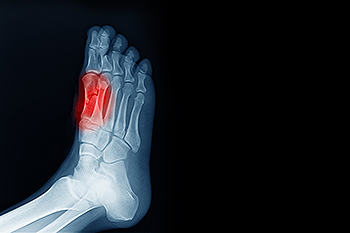
Sesamoiditis, a condition affecting the sesamoid bones beneath the big toe joint, manifests through various symptoms that can significantly impact mobility and comfort. Common indicators of sesamoiditis include pain and tenderness in the ball of the foot, particularly beneath the big toe. Individuals may experience discomfort when bearing weight on the affected foot, especially during activities such as walking, running, or squatting. Swelling and inflammation around the sesamoid bones are also prevalent symptoms of this condition, contributing to heightened discomfort and limited mobility. In some cases, individuals may notice difficulty bending or straightening the big toe due to the pain and stiffness associated with sesamoiditis. The symptoms of sesamoiditis can vary in intensity, ranging from mild discomfort to severe pain that interferes with daily activities. If you have difficulty walking, it is suggested that you visit a podiatrist who can diagnose and treat sesamoiditis.
Sesamoiditis is an unpleasant foot condition characterized by pain in the balls of the feet. If you think you’re struggling with sesamoiditis, contact one of our podiatrists of Jill Einhorn, DPM and James Einhorn, DPM. Our doctors will treat your condition thoroughly and effectively.
Sesamoiditis
Sesamoiditis is a condition of the foot that affects the ball of the foot. It is more common in younger people than it is in older people. It can also occur with people who have begun a new exercise program, since their bodies are adjusting to the new physical regimen. Pain may also be caused by the inflammation of tendons surrounding the bones. It is important to seek treatment in its early stages because if you ignore the pain, this condition can lead to more serious problems such as severe irritation and bone fractures.
Causes of Sesamoiditis
Treatment for sesamoiditis is non-invasive and simple. Doctors may recommend a strict rest period where the patient forgoes most physical activity. This will help give the patient time to heal their feet through limited activity. For serious cases, it is best to speak with your doctor to determine a treatment option that will help your specific needs.
If you have any questions please feel free to contact our offices located in Brooklyn and Astoria, NY . We offer the newest diagnostic and treatment technologies for all your foot and ankle needs.